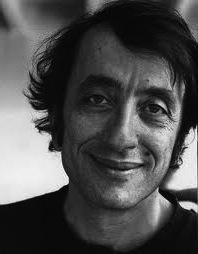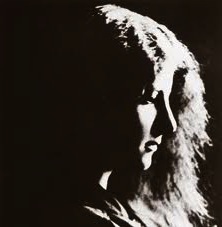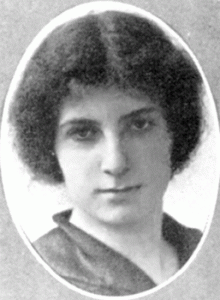“For ten years the Palestinians trusted their leaders without realizing that those leaders were either powerless or were collaborating. And when finally they understood, some of them went berserk because they realized they’ve been victims of a senseless outrage…You live in [Palestine], among these people. You have no choice. You have to live with us.”—Albert Pharoan to Golda Myerson
 When Albert Pharoan makes this statement to Golda Myerson, she doesn’t hear a thing. “She shudders, as if she’d received an electric shock. She would like to kill him.” A Russian Jew who has arrived in Palestine by way of Milwaukee, Golda Myerson (later Meir) is bound “in an organic way to the earth,” working on a kibbutz in 1923, and feeling as if her arrival in Palestine is a return to her ancestral “home.”
When Albert Pharoan makes this statement to Golda Myerson, she doesn’t hear a thing. “She shudders, as if she’d received an electric shock. She would like to kill him.” A Russian Jew who has arrived in Palestine by way of Milwaukee, Golda Myerson (later Meir) is bound “in an organic way to the earth,” working on a kibbutz in 1923, and feeling as if her arrival in Palestine is a return to her ancestral “home.”
The British, who are occupying the country under a League of Nations mandate, have declared that they favor the creation of a Jewish national homeland in Palestine, despite the fact that the land already has a native population who have lived there for centuries. Jews like Golda, committed to Zionism, are immigrating to Palestine from all over the world, setting up communities to farm the land, and Arab peasants are rioting against those who intend to create a new nation on “their” land.

Against this backdrop of Palestinian history from 1923 – 1948, Lebanese author Selim Nassib creates the extraordinary love story of passionate, young Golda Meir and Albert Pharoan, a wealthy Arab banker. Pharaon has abandoned the high life of Beirut, along with his wife and children, to live in Haifa, where he is a first-hand observer of the growing Zionist movement, along with the conflicts Zionism creates among the Arab people. From 1929 to 1936, according to legend (corroborated by his family, though not hers), they see each other secretly, reveling in each other’s company even as they are poles apart in their visions for Palestine.
Their  affair takes place during major policy decisions by the high-powered leaders with whom Golda associates, well described here, but Nassib’s point of view is different from that of most western “founding-of-Israel novels.” Nassib points up the weakness of the British governors, emphasizing that their vacillation between promoting a Jewish homeland and back-tracking to avoid trouble among the Palestinians is a major factor in the hostilities, and their ill-conceived withdrawal when tensions are at their height contributes to the bloodshed. Massacres of Jews by Arabs are described here, but so, too, are the less publicized, but equally bloody, massacres of Arab peasants by the militant Jewish members of Irgun. Extremists on both sides come under fire as Golda and Albert try to keep love alive.
affair takes place during major policy decisions by the high-powered leaders with whom Golda associates, well described here, but Nassib’s point of view is different from that of most western “founding-of-Israel novels.” Nassib points up the weakness of the British governors, emphasizing that their vacillation between promoting a Jewish homeland and back-tracking to avoid trouble among the Palestinians is a major factor in the hostilities, and their ill-conceived withdrawal when tensions are at their height contributes to the bloodshed. Massacres of Jews by Arabs are described here, but so, too, are the less publicized, but equally bloody, massacres of Arab peasants by the militant Jewish members of Irgun. Extremists on both sides come under fire as Golda and Albert try to keep love alive.

Nassib’s adept descriptions of places, action, and historical background help bring the novel to life for readers who may not be completely familiar with this period. (The publisher also provides a helpful chronology at the end.) And though it is difficult to imagine the Golda Meir we may remember in her later years as the lusty, young woman who appears here, Nassib manages to make this love story plausible within the context of her history and the history of Israel. The novel tells an unusual tale about a remarkable, committed woman, and her memory is in no way diminished by this depiction of what may have been one of her most unusual commitments.
Notes: The author’s photo appears on http://www.unionsverlag.com
Two very early photos of Golda Myerson appear as part of a story about this novel, how it came to be written, and how much of it may be true. http://www.tabletmag.com
